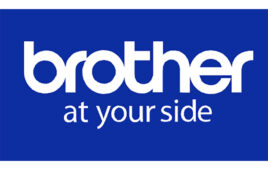 A multi-faceted approach to store security—from locks and cameras to smart safes and best practices in data security—is necessary to keep c-stores safe from theft in 2017.
A multi-faceted approach to store security—from locks and cameras to smart safes and best practices in data security—is necessary to keep c-stores safe from theft in 2017.
By Ed Collupy
Around-the-clock business like the retail petroleum/convenience store industry drives many conversations about site security, but such efforts today go far beyond locking things down and being preventative.
The reality remains that there’s a need for loss prevention activities and systems. The National Retail Federation reported in its 2017 National Retail Security Survey that loss continues to have a significant effect across all segments of a retailer’s bottom line; with “an average shrink rate of 1.44%, this cost the overall U.S. retail economy $48.9 billion in 2016.”
Business leaders, however, are discovering that systems, including security technologies, can be leveraged beyond their primary purpose.
STORE SIGHTSEEING
There’s nothing like a walk inside and outside a store to discover how spending on security can unlock opportunities that capitalize on the investment and improve the bottom line.
As you enter many c-stores just look up and there you are live on a customer-visible monitor and all around the store are one of the most common security tools: cameras backed up by digital video recorders. Point-of-sale (POS) and video integration has been around, but by using today’s more advanced technology, operators are storing transaction data on a centralized server where they can use an iPad while away from the store to search for and review data such as transaction voids at all locations in a specified time range. Some systems even email a daily report with links to the video of suspect transactions.
Camera technology is but one of many Internet of Things (IoT) devices in today’s connected store and can provide insights into everything from customers’ response to marketing campaigns to a look at traffic and buying patterns.
Store walks are part of the everyday life of loss prevention and district / regional supervisors. Many retailers now use software, enabled on mobile devices, to manage audits and document incidents such as slip & falls and robberies. Some of these solutions provide data needed for compliance reporting, color-coded maps based on audit scoring and summarize data to identify operational improvement areas.
CHECKOUT CHALLENGES
At the checkout, the trials and tribulations with card payments continue. In the recent Thales Data Threat Report, 43% of retailers surveyed had at least one data breach in 2016, while 32% reported having more than one incident. As a result, IT spending on security is rising with investments in data encryption and tokenization and many of the POS providers in the retail petroleum/c-store industry are actively developing these features into their solutions.
The Payment Card Industry Data Security Standard remains a challenge for retailers, according to the recently published Verizon 2017 Payment Security Report, where findings indicate almost half of retailers, after becoming fully compliant, find themselves out of compliance a year later. It advocates for continuous monitoring and maintenance of controls (e.g. systems, network) and being able to adjust to changing business priorities.
Despite the new payment methods available, cash is still a significant portion of the way customers pay; about one-third, according the National Association of Convenience Stores (NACS) data, and the Federal Reserve says greater than 50% of transactions under $25 are paid with cash.
For c-stores most of this is for merchandise/food purchases and securing and accessing cash in “smart safes” continues to grow. These safes, still in reach of the cashier to drop and retrieve money through recyclers, are getting even smarter. Note readers can verify and authenticate the bills and track the drops by employee.
Biometric capabilities are being added to unlock the safe or to open them in conjunction with a combination. Currency management software solutions when integrated into a smart safe and POS system can improve bookkeeping functions and provide alerts and reporting to management.
FORECOURT FORENSICS
Solutions, in the cloud and as a managed service, that monitor data points detecting fuel inventory variances are being used by fuel-savvy operators to identify and handle theft/fraud, tank leakage, dispensers and human errors.
This past July in New York, according to KrebsOnSecurity, skimmers using parts from cell phones were installed in pumps and for the first time discovered to be transmitting text messages with the capability to send them real time to the thieves anywhere they may be.
Dispenser manufacturers continue to make improvements with security features including tamper detection key pads; indicator lights visible to customers and employees to identify card reader security status; receipt paper housed in a separate cabinet preventing access to other internal components; along with updated door locks/controls.
The best defense continues to be a combination of management and employee attention to what’s going on out on the forecourt, supported by security cameras and/or tamper-evident seals on the pumps. In conjunction with the NACS / Conexxus We Care initiative, one of the industry’s leading software solutions providers recently released a mobile app to help track, through a registration and verification process, the status of tamper-evident labels that are placed on key areas of a pump.
A single site version of the app, SkimDefend, can be downloaded for free for Apple and Android mobile devices.
UNLOCKING DOORS
Security and the technologies that support it have often been about controls, limiting access and preventing bad things from happening. Staying safe is something that must remain important to convenience store owners.
Through collaboration between cross-functional colleagues and their solution providers, today’s c-store is both secure and opens the door wide, putting asset protection systems to work throughout the store by improving the customer experience along with operational activities and at the enterprise level by providing new insights.
Ed Collupy, executive consultant at W. Capra Consulting Group, can be reached at [email protected] and be sure to visit www.capraplus.com for more retail technology and business insights. Collupy has IT leadership and business team experience providing strategic, operational and project leadership to retailers, emerging businesses and technology companies.




